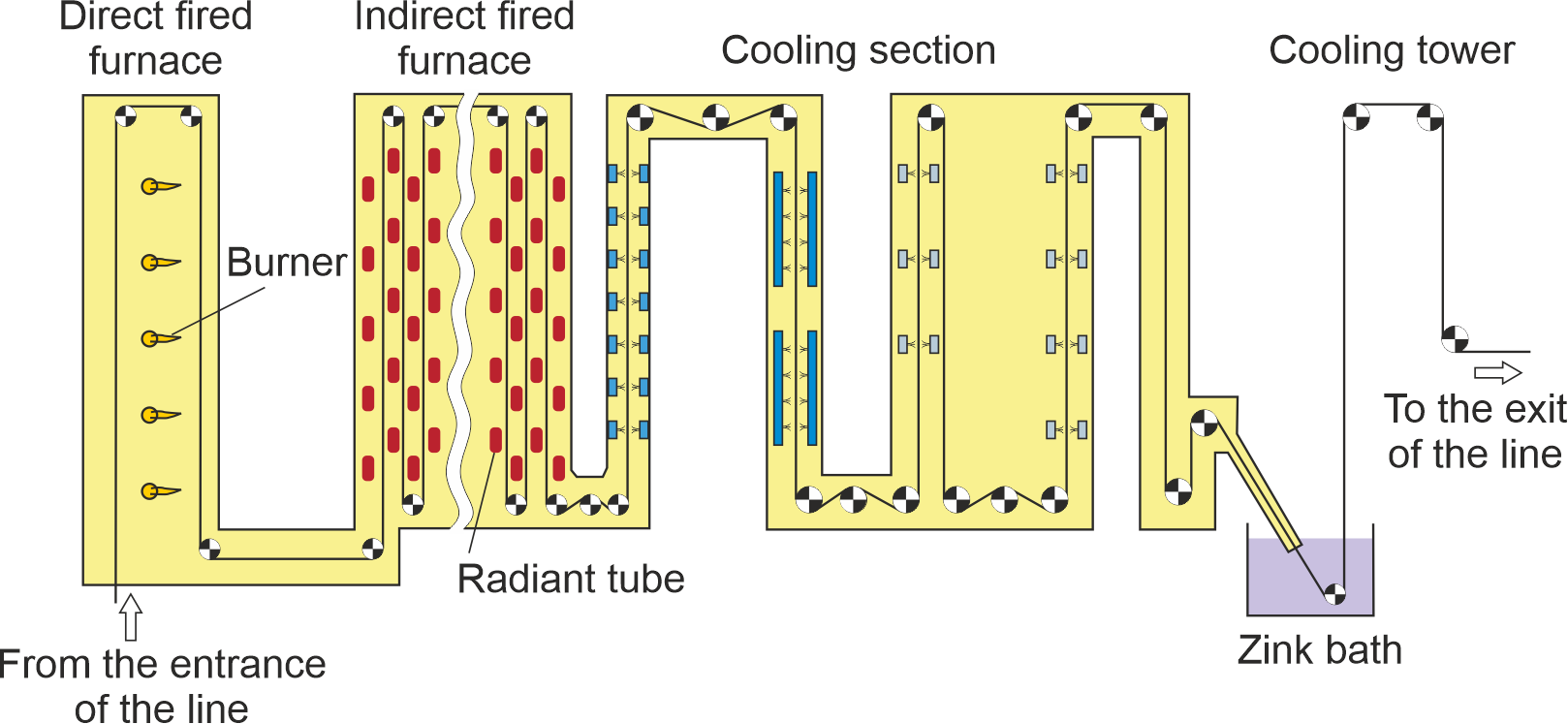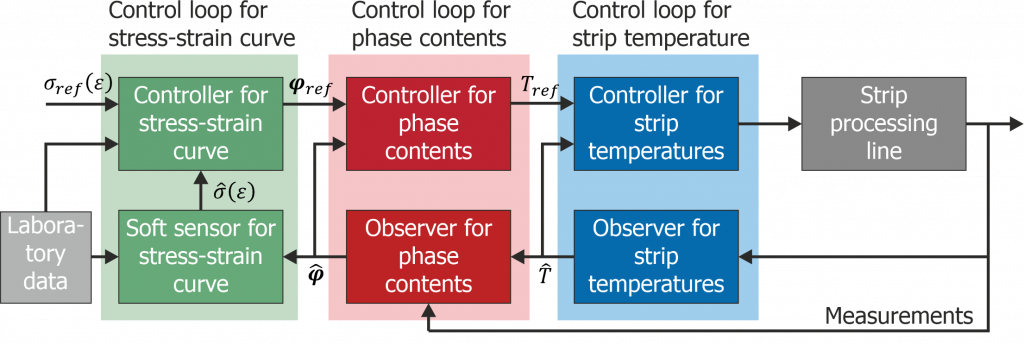Research area Control of strip material properties
Modeling, observer design, and control of material properties in strip processing lines
Research focus
- Modeling, parameter identification and estimation of temperature-induced phase transformations in steels
- Model- and learning-based optimal control concepts of phase contents in thermal processing steps of steel strips
- Soft-sensing of local phase fractions
- Data- and model-based monitoring and optimal control of macroscopic material properties
Description
The research activities in this area focus on model-based open- and closed-loop control of phase transformations, estimation and soft-sensing of microstructural changes based on available measurement data, and the design of data-driven and model-based estimation and optimal control concepts for macroscopic material properties.

Influences on material properties.
The macroscopic material properties of steel strips depend on their chemical composition and many microstructural properties, including phase contents (austenite, ferrite, bainite, martensite, …), morphology of crystal grains, dislocation density, and solutes, see Figure 1. Some of these properties can be controlled by thermal and mechanical processing steps. However, the metallurgical relations behind these influences are usually complex, dynamical, nonlinear, and multivariable. This may explain why automatic process control solutions for material quality parameters are generally not available in the steel industry. The industrial state of the art is tracking control of measurable local process variables like strip temperatures with setpoint values that are chosen by metallurgical experts.
Because volume fractions of phases are important intermediaries between process temperatures and material properties, this project also aims at modeling, estimation, and control of phase transformations during thermal treatment of steel strips in continuous processing lines. Here, a low-order dynamical model of the evolution of phase contents in the strip material will be developed to have a basis for simulations, state estimation, and control design. Especially, the non-isothermal austenite decomposition process during cooling phases is of central interest. Because temperature and time are two controllable process quantities that drive the austenite decomposition process, the temperature evolution of the strip will be used as main control input. Closed-loop control of the austenite phase content is expected to produce desired material properties with superior accuracy compared to state-of-the-art temperature control schemes.

Typical strip processing line with annealing furnace, cooling section and zink bath.
Sensors for in-process measurement of phase contents are not yet available at economically viable costs. This is why existing process and measurement data that are available along the strip processing line (see Figure 2) will be used in a soft-sensor concept to monitor the evolution of the local austenite content. Here, physics-based and data-driven modeling techniques may be combined to capture the nonlinear system behavior, changing material parameters, and various physical interactions between the individual processing steps.

Closed-loop control concept for stress-strain curve.
The long-range objective of this research area is direct control of material properties, see Figure 3. For instance, in case of modern multi-phase steels, the strip temperature evolution T, the resulting volume fractions of phases φ, and the resulting stress-strain curve σ(ε) (macroscopic mechanical material property) may be considered in a cascade control structure. For the design of the outermost control loop, a low-dimensional computationally efficient static model describing the influence of microstructural parameters on macroscopic material properties is required (see Figure 1). To develop such a model, both data-driven and physics-based modeling methods are used. They may include domain knowledge, measurement data, regression analyses, or machine learning. Based on the model, optimal control concepts for macroscopic material properties can be developed. Additionally, adaptive and learning-based control concepts may help to minimize control errors caused by modeling inaccuracies. A challenge for feedback control of macroscopic material properties is that real-time in-process measurements of these properties are notoriously difficult and generally not yet available at industrial plants. Model-based soft-sensing and sensor fusion concepts may help to overcome this problem.
Links
- Sponsors and research partners
- Related projects at the institute